[Press kit] SuperGrid Institute achieves first 50kV DC breaking by combining a superconducting fault current limiter with a circuit breaker
Key news:
- SuperGrid Institute (France) validates its resistive superconducting fault current limiter (RSFCL) technology combined with a mechanical circuit breaker for high-voltage direct current (DC).
- The RSFCL is a robust, compact and fast solution, with significant potential for the offshore sector.
- The technology can be used in both AC and DC networks.
It’s a world first: SuperGrid Institute has validated its resistive superconducting fault current limiter (RSFCL) technology combined with a mechanical DC circuit breaker in major tests at 50kV. The current was limited by 87% compared with the prospective current! With these tests, SuperGrid Institute has paved the way for a new breaking option to protect high-voltage direct current (HVDC) networks. The RSFCL is a compact technology with significant potential for the offshore energy sector.
With the rise of renewable energies, power grids are under intense pressure, and the increase in fault currents requires new devices to control and eliminate them, all while ensuring the continuity of power transmission.
Superconductivity: a brilliant solution for power grid protection
SuperGrid Institute is harnessing the potential of superconducting materials to effectively reduce fault currents in power grids. Superconductors are remarkable materials that reveal their full potential at very low temperatures (around -200°C). They offer very high resistance when the current is excessive (in the event of a fault) yet has no impact on the transport of electricity when the current is at a normal level.
Since it was founded ten years ago, the company has steadily built up its expertise in this brilliant solution (by participating in European projects such as FastGrid and SCARLET), which is particularly relevant to DC networks, since it is a passive system offering maximum security without the need for high-speed circuit breakers.
SuperGrid Institute has therefore developed a prototype resistive superconducting fault current limiter (RSFCL) which ensures perfect conductivity in normal operation and very high resistance in the event of a fault current.
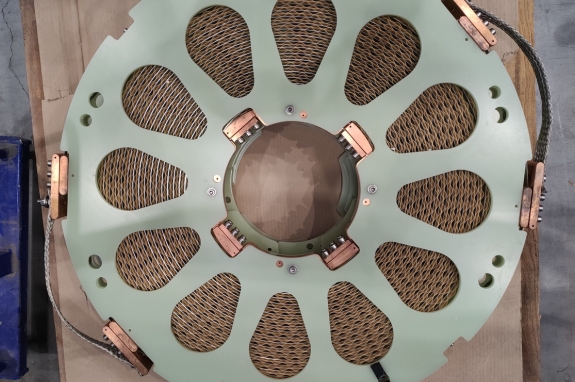
A pancake coil developed by SuperGrid Institute, containing 72 m of superconducting tape.
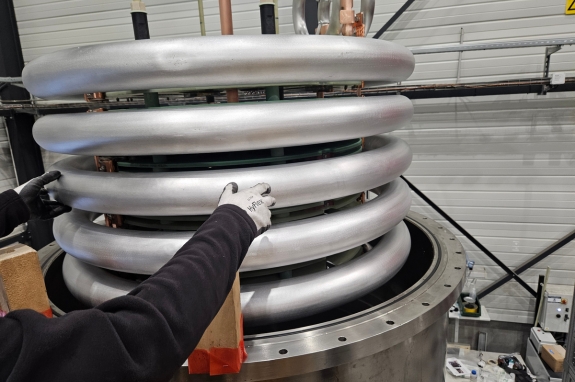
SuperGrid Institute’s RSFCL demonstrator features 10 pancake coils. They are inserted into a liquid nitrogen tank (cryostat) at -205°C to allow the magic of superconductivity to work!
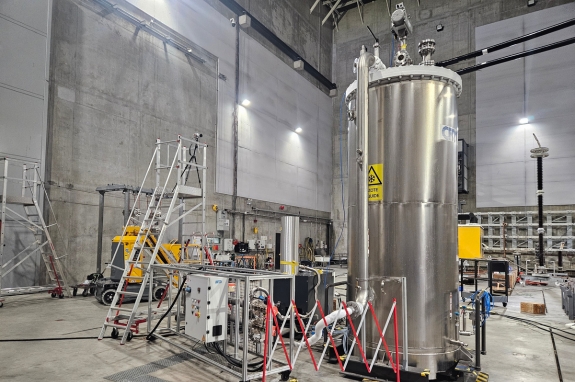
The RSFCL is installed with a current-injected mechanical DC circuit breaker in SuperGrid Institute’s High Power Source facility, connected to its DC short-circuit generator for testing.
High-voltage DC tests: a world first
In December 2024, the Institute’s experts combined the RSFCL with a DC mechanical circuit breaker with vacuum chamber and current injection, to test the configuration under the stress of an industrial environment by reproducing field conditions.
20kV, 30kV, 40kV… crescendo, the voltage was raised to 50 kV DC and with 1.8 MJ injected! The RSFCL managed to limit the current to 5.5 kA, while the prospective current was 43 kAp. The DC circuit-breaker then cut off the fault current.
“This is a world first for high-voltage direct current,” explains Christophe Creusot, R&D Manager at SuperGrid Institute. “The graph shows the results of the test: in purple, the prospective current, in green, the limited current, in blue the current breaking with the DC circuit breaker, and in orange the voltage upstream of the limiter.”
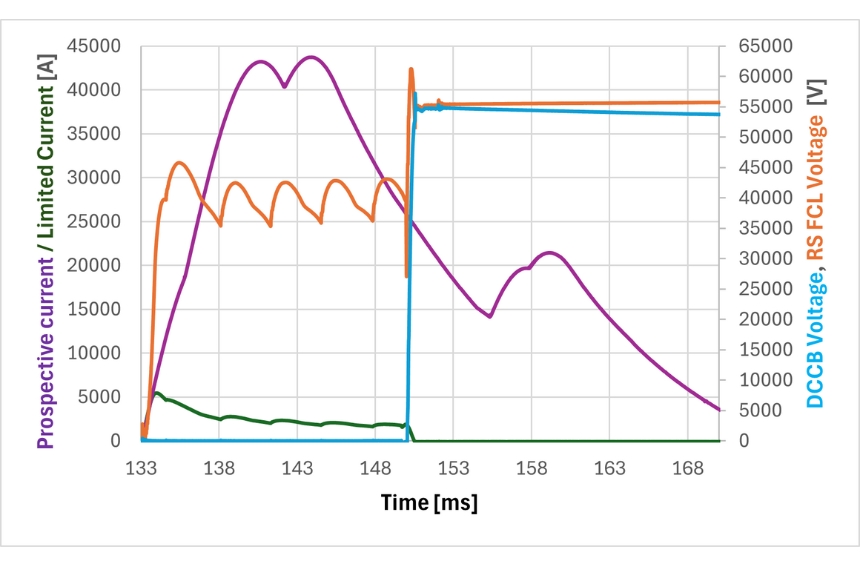
By validating this technology, SuperGrid Institute is offering an attractive alternative for the protection of electrical networks. The compact, environmentally-friendly technology reduces the size of DC protection equipment on the ground by 40-50%, by incorporating a simplified mechanical DC circuit breaker with the RSFCL which uses as many standardised components as possible in a gas-insulated environment (GIS). This is not only a significant advantage for offshore platforms but also provides cost savings. In addition, resistive superconducting fault current limiters are fully compatible with AC networks.
Christophe Creusot continues: “This test campaign provided a wealth of information. Firstly, the electrical behaviour of the limiting and breaking device was in line with the predictions made by the numerical models in the various regimes tested. Secondly, the liquid nitrogen vaporising and the overpressure generated turned out to be lower than imagined, which goes in the direction of simplifying and reducing the cost of the cryostat for an industrial application.”
From the laboratory to the power grid: cryogenics demystified
The innovative design of SuperGrid Institute’s RSFCL demonstrator is based on a series of 10 pancake coils of superconducting tape in a cryostat where the liquid nitrogen has been brought down to 68 Kelvin (-205°C).
“Cryogenics can be a daunting prospect in the world of electricity,” explains Christophe Creusot. “But it’s a perfectly autonomous system where the machine generates its own liquid nitrogen and works in a closed circuit. There is redundancy, even in the event of a breakdown, and these systems have been in use for several decades in other industries, such as gas liquefaction, maritime transport of liquefied gases, food processing and pharmaceuticals.”
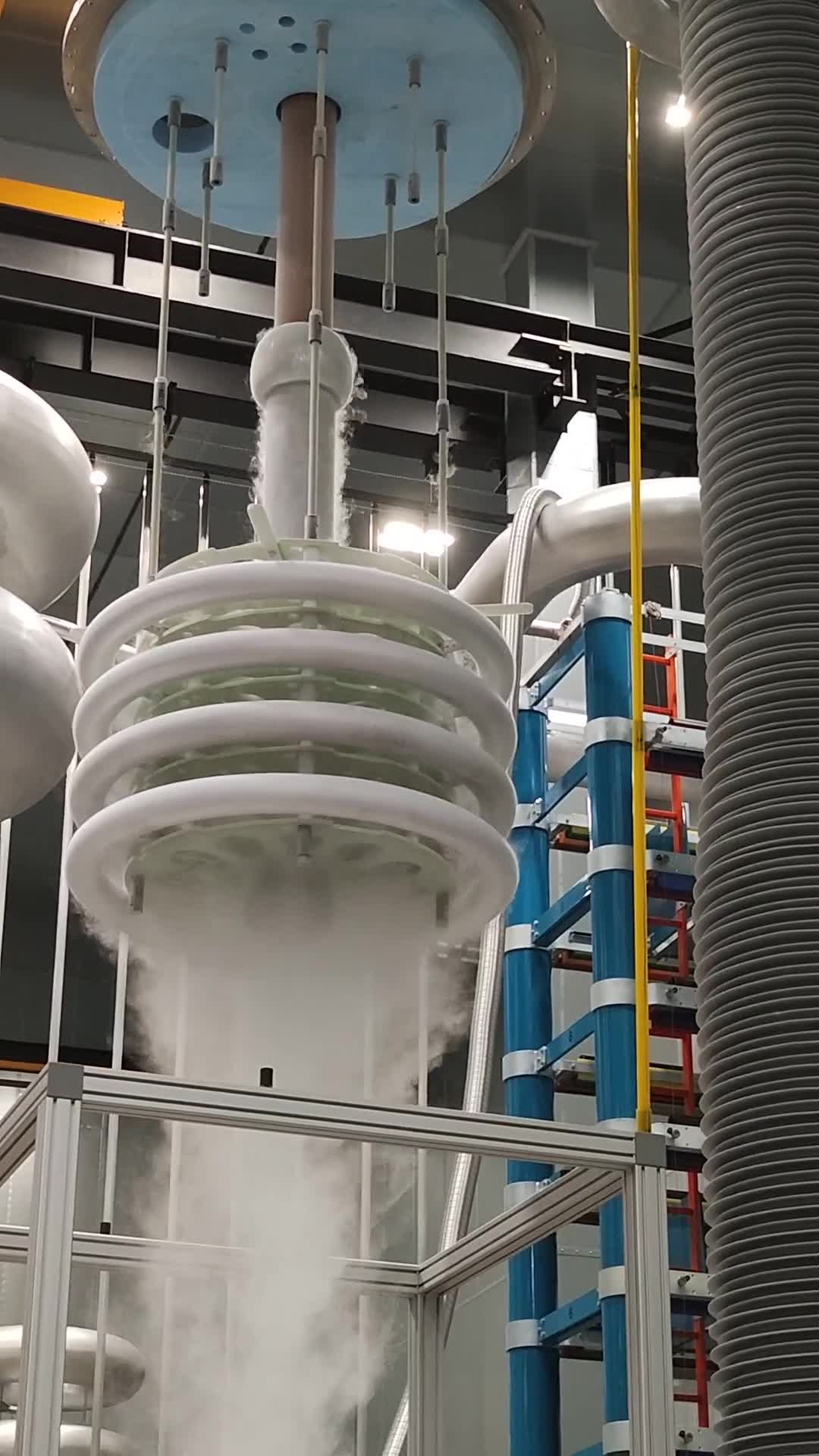
SuperGrid Institute’s RSFCL.
A unique platform in Europe
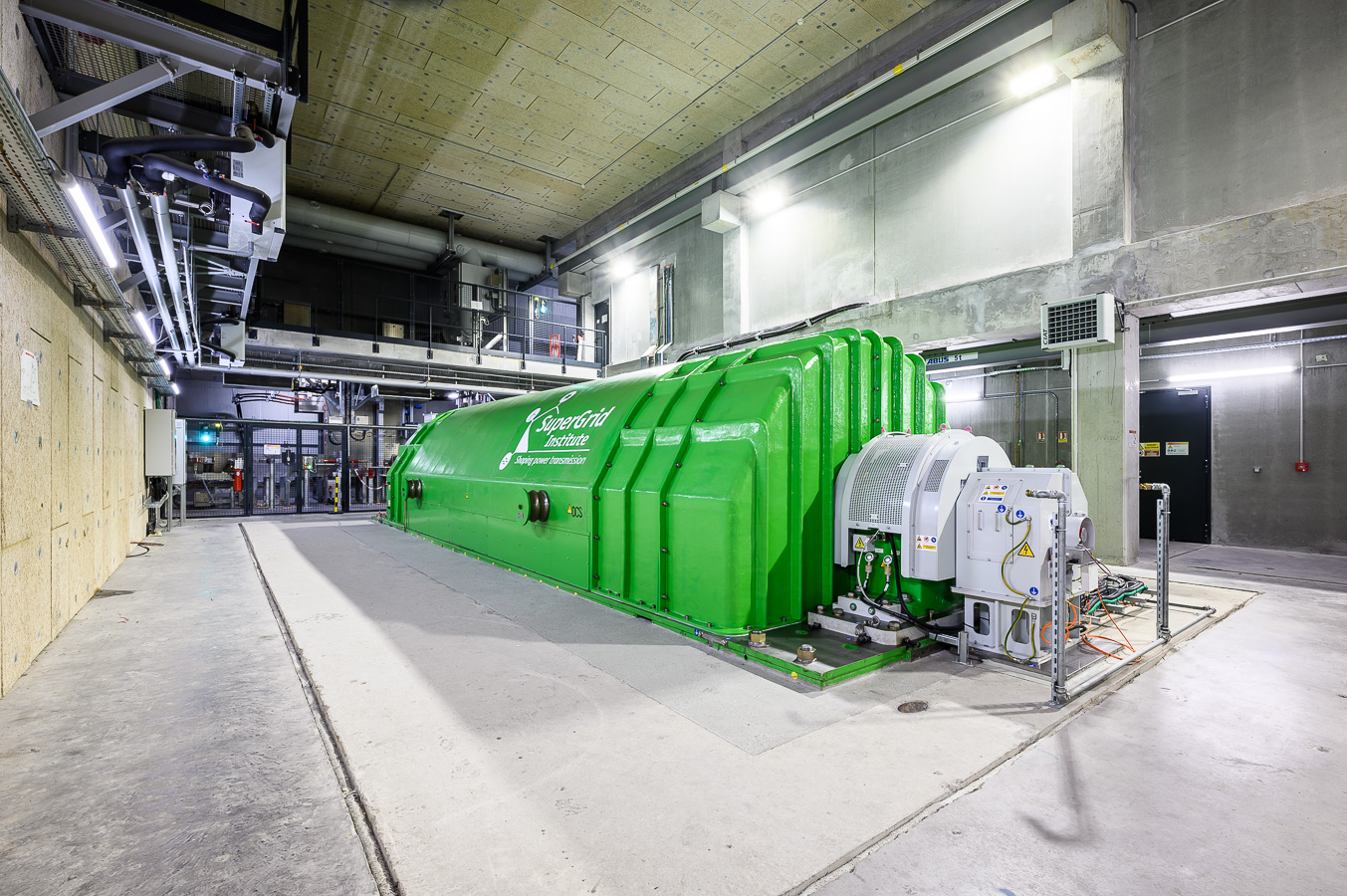
The tests were carried out in SuperGrid Institute’s DC short-circuit generator platform. This platform was designed to support industrialists in their development of future high-voltage direct current (DC) and alternating current (AC) equipment for the massive integration of renewable energies into our electricity grids.
The short-circuit generator is a current source designed to supply exceptionally high currents, in the order of a hundred kilo amperes, for extremely short periods, which is representative of the duration of short-circuits on electrical networks.


